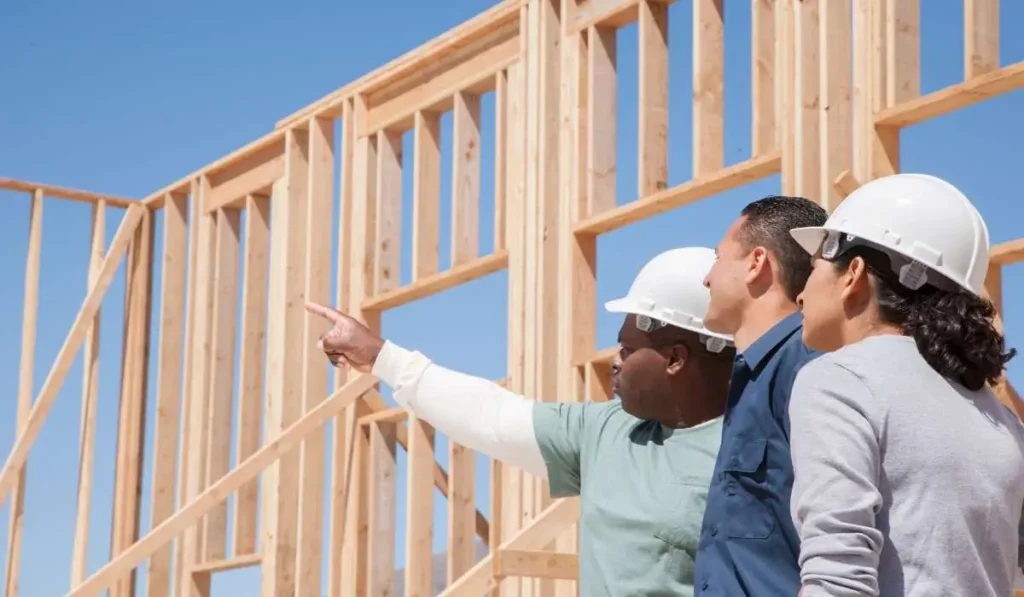Introduction: The Reasons That Creating a Custom Home Is the Greatest Dream
There’s more to building a custom home than putting up four walls and a roof. It’s the realization of your long-held dream as well as an expression of your own tastes and style. It is the ultimate fantasy come true for many, where every square inch is customized to your precise specifications. In contrast to buying a pre-built house, where sacrifices are sometimes necessary, creating a bespoke home offers total flexibility, independence, and creativity. Every decision, from the framework to the last details, is up to you.
Knowing What It Takes to Construct a Custom Home
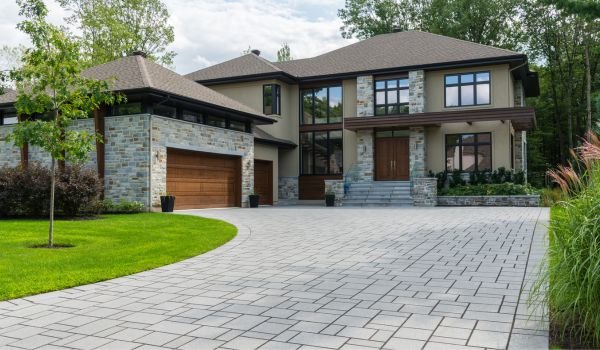
The Distinction Between Pre-Built and Custom Homes
Purchasing a pre-built or spec house means that all of the design and finish choices have already been chosen. In contrast, you may create a completely unique design when you build a bespoke house. Every element of the house may be customized, from the architectural style to the material choice, to make sure it properly suits your lifestyle.
Main Advantages of Building a Custom Home from the Ground Up
The opportunity to design a room that is exclusively yours is one of the greatest benefits of designing a new home. It permits creativity and customization. Do you want a large kitchen to host guests in? A sunlit reading alcove? A clean, simple sanctuary? Starting from scratch gives you the opportunity to realize your ideal house without sacrificing anything.
Determining the Cost of Building a Custom Home
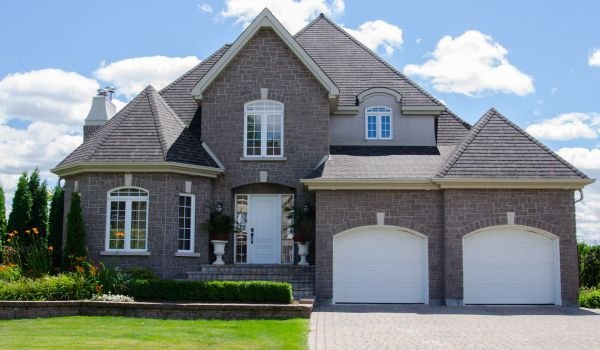
How Much Does Building a Custom Home Cost?
Custom houses have different costs based on factors including size, location, materials, and design intricacy. It’s usually a good idea to budget between $100 and $400 per square foot. On the other hand, certain luxuries may increase expenditures.
Some Advice for Efficient Budget Management
Budget adherence requires preparation and self-control. Sort your costs into categories like as permits, labor, supplies, and land purchase, and don’t forget to budget for unforeseen costs. Clear communication with your contractor can assist to prevent overspending on pointless improvements.
Unexpected Expenses to Consider When Developing a Custom House
Unexpected costs might sometimes arise even in cases where a budget is well planned. These might include municipal fees, design modifications, utility connections, and site preparation. Provide for unforeseen expenses by allocating at least 10% to 15% of your overall budget.
Selecting the Ideal Site for Your Custom Home
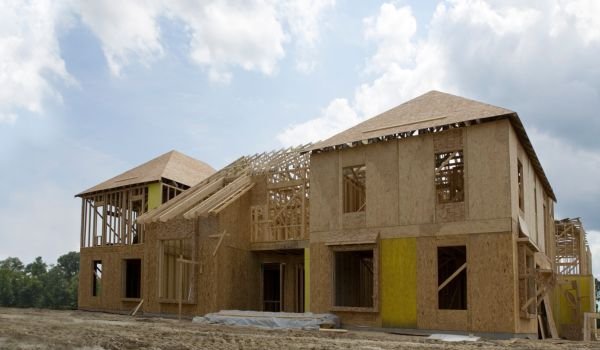
Why Place Is More Important Than You May Think
The usefulness and cost of your custom house are greatly impacted by the land you choose to construct on. Even while a gorgeous site may seem enticing, functional considerations like utilities, zoning laws, and accessibility are just as important.
Considerations for Choosing Your Land
Before buying property, consider the drainage, topography, and state of the soil. Additionally, whether you’re developing in a rural or suburban region, take into account how close the school, stores, and other facilities are.
Advice for Assessing the Land Before Buying
To determine if the land is buildable, speak with a surveyor before making a decision. Verify that you are aware of any easements, limitations, or environmental considerations that might have an impact on your building plans.
Making a Wish List: What Features Should Your Custom Home Include?

Finding Your Essential and Desirable Items
Make a list of the essential elements before starting the design. These can include an energy-efficient HVAC system, a large kitchen, or plenty of storage. Next, make a second list of “nice-to-haves,” such as a media room or at-home gym. Setting these lists in order of priority can assist you in making wise choices when your finances change.
How to Set Budget-Friendly Features in Order of Priority
Not all of the items in your wish list will be included. Prioritize qualities that will last over time, such durability, energy efficiency, and flexibility, to prevent going over budget.
The Value of Including Future-Proof Features in Your Custom Home Design
When designing your house, plan ahead. Think about the potential future growth and changes in your family. In five years, you could need an office even if you don’t today. Design flexibility will save you the headache of later, expensive renovations.
Putting Together Your Ideal Team: Selecting the Best Contractor and Architect
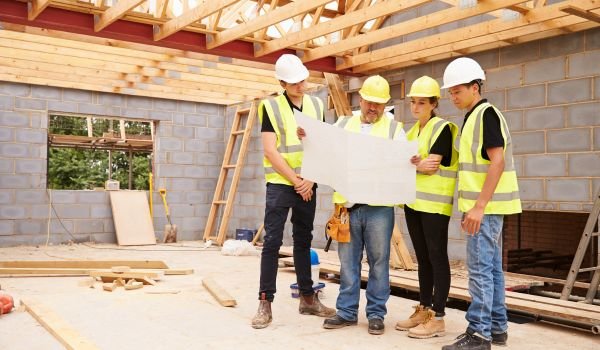
What a Custom Home Architect Should Have
The person who will make your concept a reality is your architect. Seek for someone that is eager to work with you, has knowledge of your style, and has expertise building unique houses. Request to see their portfolio and client endorsements.
How to Pick a Reputable Contractor
The choice of contractor you select will determine how well your construction turns out. Select a person who can communicate well who is open and honest about expenses, schedules, and possible obstacles in addition to their talent and experience.
Creating a Collaborative Team: Communication Strategies that Work
From the beginning, establish clear channels of communication. To avoid misunderstandings and guarantee that your project remains on schedule, regular updates, progress meetings, and an open feedback loop between you, your architect, and your contractor are essential.
Creating the Floor Plan for Your Personalized House
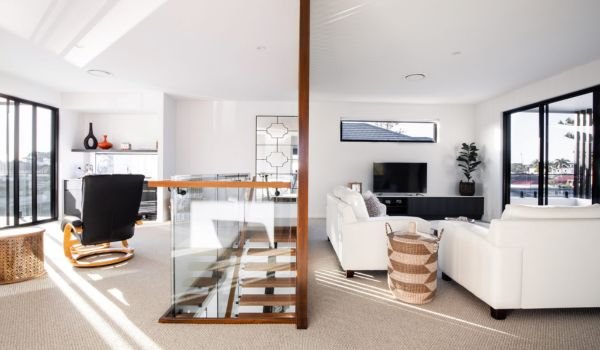
Designing a Beautiful and Useful Layout
The functioning of your house is built upon its floor design. To improve comfort and flow, start with your everyday activities when designing the arrangement. The objective is to strike a balance between beauty and functionality, regardless of your preference for more divided spaces or an open concept layout.
How to Optimize Energy Efficiency with Natural Light
While saving energy, well-placed windows and skylights may let in an abundance of natural light into your house. If you want to keep your house cool in the summer and harness the energy of the sun in the winter, think about using passive solar architecture.
Organizing Space in Various Areas: Kitchen, Bedrooms, and More
With plenty of counter space and effective storage, kitchens should operate as central centers. Living spaces should encourage comfort, while bedrooms should provide seclusion and peace of mind. Consider your everyday use of each location as you plan these areas.
Choosing Eco-Friendly and Superior Materials for Your Construction
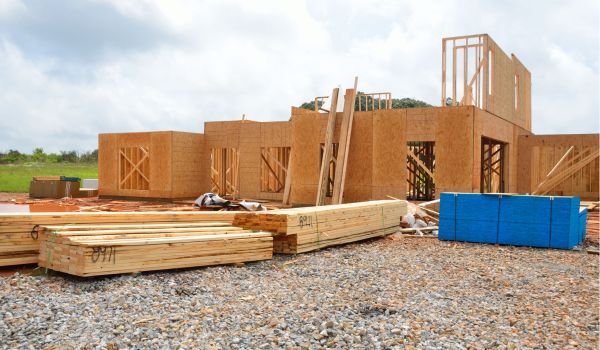
Why Material Selection Is Essential for Sustainability and Longevity
Your home’s lifetime and environmental effect may be affected by the materials you choose in addition to its visual appeal. To reduce your carbon footprint and boost the value of your property, choose materials that are low maintenance and sustainable.
Eco-Friendly Building Materials for Your Dream Home
Low-VOC paints, reclaimed wood floors, and bamboo flooring are all environmentally responsible solutions without sacrificing design. You can build a house that is healthy for the environment and for you by using sustainable materials.
Selecting Materials That Balance Durability and Aesthetics
Achieving a balance between resilience and flair is crucial. Durable materials like stone or ceramic tiles should be used in high-traffic areas like the kitchen and baths, while ornamental elements may be added to lower-impact spaces.
Getting Licenses and Understanding Building Codes

Comprehending Local Ordinances Regarding Custom Home Construction
One of the most important—and sometimes disregarded—aspects of creating a custom home is navigating the legalities of the process. There are zoning rules, construction codes, and environmental constraints unique to each location that need to be followed. The goals of these ordinances are to maintain local cohesion, environmental preservation, and safety. It is vital to comprehend the rules before to commencing construction in order to avoid future legal impediments.
How to Obtain the Project Permits You Need
Getting permissions may be a time-consuming but essential process. Make sure you’ve obtained the necessary permits for building, land use, and utility connections by collaborating closely with your contractor and the local government. It’s crucial to be comprehensive since some locations can need specific licenses for things like fences, swimming pools, or structures. To ensure that your project stays on time, an expert contractor can help you navigate this procedure.
Collaborating with Your Contractor to Guarantee Code Adherence
Following local building rules has an impact on the construction process itself, in addition to granting permits. A trustworthy contractor will make sure that your house is constructed to the greatest standards and will be knowledgeable about these regulations. Throughout the most important stages of construction, routine inspections will be conducted to make sure everything is up to code. Future hassles may be avoided by being aware and participating throughout this process.
Commencing Construction: The Initial Phases of Constructing Your Dream House
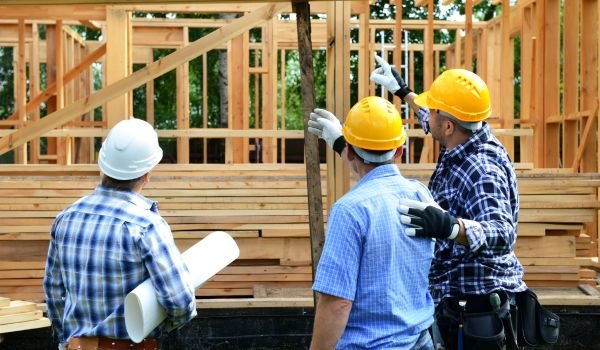
What Takes Place While the Site Is Being Prepared
The first tangible step in creating your dream house is site preparation. This include leveling the ground to provide a strong foundation and removing any existing buildings, trees, or rubbish from the property. Additional excavation work can be required, depending on the terrain, to guarantee optimum drainage and foundation stability.
Establishing the Groundwork: A Crucial Phase for Stability
Your home’s foundation is its actual and symbolic basis, thus it has to be placed carefully and precisely. Depending on your lot’s soil and climate, there are many kinds of foundations, including crawl space, basement, and slab-on-grade, each with unique benefits. The structural integrity of the foundation will be checked by your builder, laying the groundwork for the remainder of the project.
Advice on Preventing Postponements in the First Stage
Early on in the process, delays may be expensive. Before construction starts, make sure your site is ready, complete with utility connections and material delivery. Planning your calendar around good circumstances can help keep the project going forward, since weather may often cause delays.
Putting Your Blueprint Into Practice with Framing Your Home
What to Anticipate From the Framing Procedure
Your bespoke house begins to take form during the framing process. The skeleton of your house is made up of steel or wood beams that define the windows, doors, and rooms. Since it supplies the structural underpinning that all other stages will be built upon, this stage is critical to the overall integrity of the project. When you can finally go around the areas that were previously just represented on paper, it’s an exhilarating moment.
Important Structural Components to Recognize
In addition to the fundamental structure, load-bearing walls, beams, and roof trusses are crucial structural components that contribute significantly to the stability and safety of your house. Knowing these elements will enable you to decide whether modifications or reinforcements are required when building.
How to Keep an Eye on Development and Handle Possible Problems
Maintaining your involvement throughout the framing stage is crucial to making sure the job meets your standards. You may save time and money by identifying any differences early on with the assistance of your contractor and regular site inspections and communication. Never be afraid to inquire about concerns and take action before they become more difficult to resolve if anything seems strange.
Installing the Necessities for HVAC, Electrical, and Plumbing
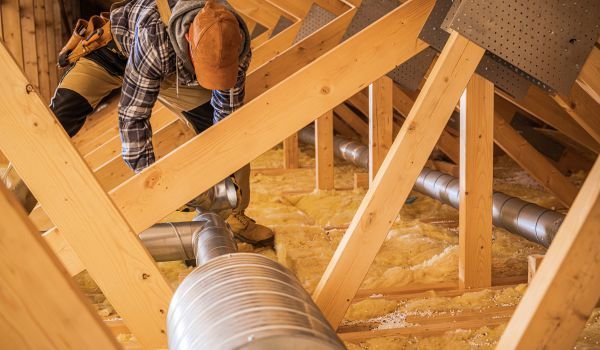
How to Design Plumbing Systems for Efficiency
A well-designed plumbing system can protect you from water waste and future maintenance difficulties. This involves installing pipes in the right places, making sure there is enough water pressure, and planning ahead for future additions like an outdoor kitchen or bathroom. To further lessen the environmental effect of your house, ask your plumber about energy-efficient fixtures and water-saving innovations like tankless water heaters.
Advice on Preparing Your Home for Future Technology (Smart Home, etc.)
As smart homes become more popular, it’s critical to ensure that your electrical system is future-proof. Think about adding smart wiring to support contemporary devices like home security systems, smart thermostats, and controlled lighting. Make sure the electrical capacity is sufficient to accommodate any future additions, such as an electric car charging station or a home office.
Selecting the Best HVAC System for Energy Efficiency and Comfort
For comfort and energy economy, heating, ventilation, and air conditioning, or HVAC, are essential. The demands of your house may be catered to by modern HVAC systems, which provide air purification and zoned heating and cooling. Together with your contractor, choose a system that satisfies your climatic and financial needs while striking a balance between performance and efficiency.
Selecting Insulation, Windows, and Doors for Your Custom Home
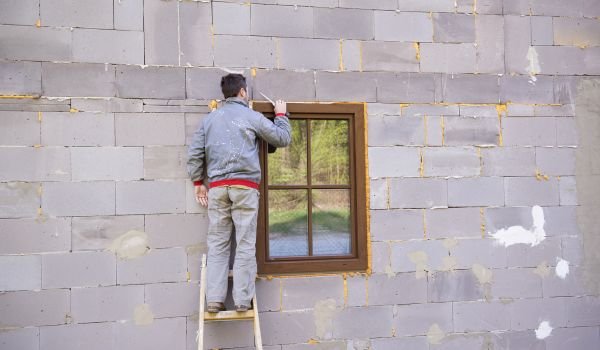
How Windows and Doors Affect Security and Energy Savings
More than just style decisions, windows and doors significantly affect security and energy efficiency. Reduce heat transmission with high-performance windows, such double or triple pane models with low-E coatings, to keep your house cool in the summer and warm in the winter. In a similar vein, energy efficiency and safety are improved by secure entrance doors equipped with contemporary locking systems.
The Greatest Insulation Solutions to Maintain Year-Round Comfort in Your Home
The unsung hero of home comfort is insulation. It lessens noise, helps control temperature, and saves energy costs. Options include stiff foam boards, spray foam, and conventional fiberglass. Depending on the environment and the sections that need to be insulated (walls, attics, or basements), each kind offers benefits of its own.
Advice on Choosing Windows and Doors That Will Blend Style and Function
Apart from their practical advantages, windows and doors also enhance the aesthetic appeal of your house. Your home’s architectural style should be complemented by the alternatives you pick, from custom-designed front doors that make a striking statement to enormous picture windows that give wide vistas.
Choosing Unique Interior Finishes: Paint, Flooring, and More
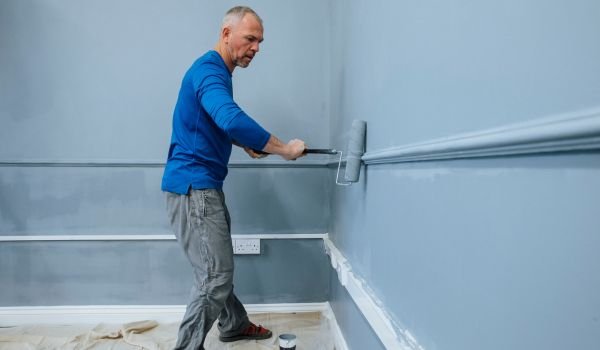
How to Choose the Ideal Flooring for Every Space
Your home’s flooring requirements may vary depending on the rooms in it. Hardwood or carpet may be more appropriate for bedrooms or living areas, while luxurious vinyl or tile are great for heavy traffic areas. When choosing a material, take into account its utility as well as its visual appeal.
Selecting Colors and Textures to Make an Interior Design That Is Coherent
The interior design of your house is determined by the colors and textures you choose. Bold, flamboyant colors may add flare and individuality, while warm, neutral tones can create a relaxing ambiance. Combine different textures, such as cloth, metal, and wood, to give the design more depth and appeal. Try new things without fear, but strive for a cohesive style that unites the whole ensemble.
Interior Finish Trends in Custom Homes
The main themes of contemporary interior design are sustainability, usability, and simplicity. Examples of these trends include minimalist cabinets and matte black hardware. To guarantee that your house will be fashionable for many years to come, choose finishes that complement your own style while also paying attention to timeless appeal.
Bathrooms and Kitchens: Creating Environments You’ll Love
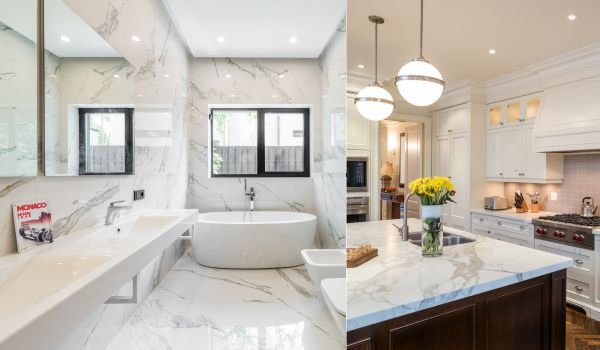
Crucial Kitchen Design Advice for Personalized Residences
Since the kitchen is the center of the house, creating a custom made kitchen provides you a great deal of creative freedom. Make sure to maximize both appearance and functionality. Open floor plans that flow naturally into living spaces are in great demand. To create a center for social interaction and as a place to work, think about adding a kitchen island with additional chairs. Storage is essential; walk-in pantries, deep drawers, and pull-out shelves can all accommodate plenty of space for all of your kitchen essentials. Modern requirements may be fulfilled by upgrading the room with high-end equipment like integrated coffee makers or smart ovens.
Bathroom Accessories that Enhance Style and Utility
Custom houses’ bathrooms provide a wonderful chance to blend elegance and functionality. Consider including spa-like amenities like heated flooring, soaking tubs, and rainfall showers. In master bathrooms, having two sinks might be more convenient, and floating vanities provide a sleek, contemporary appearance. Make sure that storage options, such as medicine cabinets and recessed shelves, are both covert and easily accessible. Longevity may be increased in shared and guest bathrooms by using materials that are simple to clean and robust.
How to Make These Busy Places Both Useful and Stunning
Bathrooms and kitchens are two of the areas in a house that are utilized the most. It’s crucial to make them sturdy without compromising elegance as a result. In the kitchen and bathroom, choose materials that can withstand heat and moisture. In addition to providing safety, stone countertops and backsplashes provide visual appeal. Use lighting in these spaces to establish a balance between use and beauty. For example, soft, ambient lighting in the bathroom and under-cabinet lighting in the kitchen may create a cozy, welcoming ambiance.
Increasing the Appeal of Your Custom Home with Outdoor Living and Landscaping
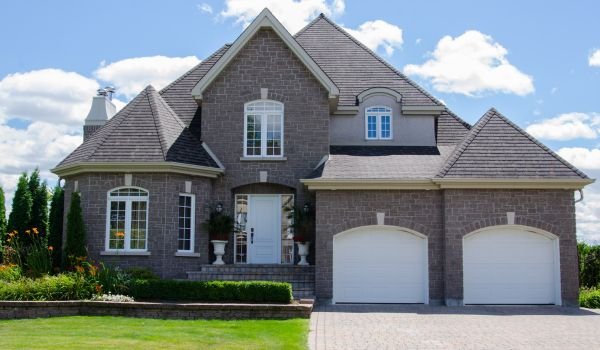
Creating an Outdoor Area That Goes Well with Your House
Your unique home’s outside area is an extension of it, and tasteful landscaping may significantly increase its allure. Your outdoor space should match the home’s architectural style, whether you choose a lush, garden-inspired refuge or a low-maintenance, minimalist design. To create a welcoming atmosphere, think about include elements like paths, sitting places, and well placed flora. Adding outdoor kitchens, fire pits, and pergolas to your backyard may make it a year-round living area.
Ideas for Low-Maintenance Landscape Design for Active Homeowners
Even if not everyone has the time for ongoing maintenance, a lovely environment doesn’t have to be sacrificed. Choose native plants instead of imported ones; they will thrive in your area’s environment and need less water and upkeep. Hardscaping features like wood decking, stone, or gravel may cut down on the amount of grass that has to be mowed and watered. Intelligent irrigation systems and drought-tolerant plants may help save water while preserving a colorful, healthy yard.
Designing Usable Outdoor Living Areas: Patios, Decks, and Additional Features
The popularity of outdoor living areas is rising because they provide a smooth transition between inside comfort and outdoor beauty. To provide a shaded space for eating and relaxing, think about building a covered patio or deck. An outdoor kitchen with a fridge, grill, and prep area might be a game-changer if you like to entertain. A well-planned sitting area with waterproof furniture may also provide a warm ambiance for events. Adding a water element, such as a fountain or pond, may provide a quiet atmosphere for individuals who are looking for serenity.
Green Building: Including Eco-Friendly Techniques in Your Personalized Residence
The Significance of Green Building in Your Custom Home
Green construction isn’t simply a fad; it’s a sensible approach to lower your carbon footprint and improve the efficiency of your house. Since they often use non-toxic materials and enhance indoor air quality, sustainable houses are better for the environment and its residents. Furthermore, eco-friendly houses are usually more energy-efficient, which lowers utility costs over time. As far as possible, your unique construction will be future-proof thanks to the integration of sustainable methods.
How to Include Rainwater Gathering, Solar Panels, and Other Features
Solar panels and other renewable energy sources are excellent ways to lower energy expenses without having a negative environmental effect. Solar panels may be deployed as freestanding arrays or elegantly incorporated into the roof design. In order to lessen your dependency on municipal water sources, think about implementing rainwater gathering systems, which may be utilized for indoor non-potable applications or irrigation. Geothermal heating systems, energy-efficient windows, and building with recycled or repurposed materials are some other environmentally friendly choices.
Energy-Saving Strategies to Lower the Carbon Footprint of Your House
When developing a bespoke house, energy efficiency should be the first consideration. To improve temperature control and minimize waste, install high-performance insulation, fix air leaks, and employ energy-efficient HVAC systems. Long-term financial savings are achieved by using appliances with ENERGY STAR ratings as they consume less water and power. Additional ways to lessen the environmental effect of your house include low-flow plumbing fixtures, smart thermostats, and energy-efficient lighting.
Interior Design Ideas to Make Your Custom Home More Unique
How to Bring Your Personality Into Every Space
One of the most exciting things about creating a bespoke house is personalization. You may choose to keep your style diverse, aggressive, modern, or charmingly rustic—you own the ability to express who you are throughout. While focal points may be created by distinctive elements like artwork or statement lighting fixtures, the room can be united by carefully selecting colors, textures, and patterns. Never be afraid to include pieces that are personally meaningful, like heirlooms or homemade items.
Considering Future Growth and Family Needs in Design
A well-thought-out bespoke house anticipates future demands in addition to meeting present ones. Consider include adaptable areas that may change over time, such a guest room that can serve as a home office, if you want to expand your family. Multipurpose sections and open floor layouts provide flexibility as your lifestyle changes. It’s a good idea to take into account aging-in-place design elements, such as single-story living areas and bigger doors, since they enable your house to grow with you.
Modest Design Elements That Have a Significant Effect
The little things may sometimes make the biggest impressions. Door knobs, light switches, and cabinet hardware may all quietly improve the overall look of a room. Custom-built bookshelves, accent walls, and distinctive lighting fixtures may all create a striking impression without taking over the room. Using organic elements in your design, such fabrics, stone, or wood, gives it warmth and personality.
Last-minute Walkthroughs and Inspections: Making Sure Everything Is Perfect
What to anticipate from your last house examination
It is essential to do a last check to make sure everything is finished to your satisfaction and in compliance with the code before the keys are handed over. Plumbing, structural components, electrical systems, and other areas will all be inspected. It’s also a fantastic chance to find any possible problems that should be fixed before you move in. During this tour, take your time and make sure every aspect is up to par.
Common Problems to Check for Before Relocating
Common problems like uneven flooring, misaligned doors, or other cosmetic flaws may come out during the final inspection. Make that the fixtures, outlets, and appliances are operating properly as well. Examine the specifics of your bespoke finishes and confirm that any last-minute design modifications were carried out in accordance with your contract with the contractor.
How to Deal with Repairs or Last-Minute Adjustments
After the final examination, alterations or repairs at the last minute often become necessary. Make sure you get a completion deadline and are clear about any necessary revisions. For your house to be ready for occupancy, a reputable contractor will take care of these problems right away.
Getting Set to Move Into Your Custom Home
Advice for a Stress-Free and Easy Move
Relocating to a new residence may bring with it both excitement and anxiety. Plan ahead by choosing reputable movers, carefully marking boxes, and putting necessary stuff in bags that are easy to find so that the procedure goes more smoothly. Start by arranging your belongings in the most used rooms, including the kitchen and bedrooms, then go room by room. You’ll feel less stressed and be able to appreciate your new home if you give yourself some time to adjust.
How to Adapt and Begin Savoring Your New Environment
After you’ve relocated, spend some time to explore your new environment. It will seem more like home when you add your favorite pieces of furniture, artwork, and décor to your room. To commemorate your achievement, have a little party and invite your loved ones over. The more time you spend in the area, the more personal it will seem.
Creating a Welcome Environment for Friends and Family
Your unique house is a reflection of who you are, and nothing completes the picture like a warm and inviting interior. Your visitors will feel at home if you provide them with warm lighting, comfortable sitting places, and well-thought-out touches like stocked beverage stations or fresh flowers. A great way to show off your new place and celebrate with loved ones is to have a housewarming party.
How to Take Care of and Maintain Your Custom Home
Important Upkeep Assignments during the Initial Year
In a custom house, the first year is critical for resolving any little problems that could come up. Make sure the plumbing, electrical, and HVAC systems in your home are operating at peak efficiency by giving them regular inspections. Don’t forget to finish any seasonal tasks like roof inspections, appliance service, and gutter cleaning. Maintaining these responsibilities will help avert later, more serious issues.
How to Make a Schedule for Home Maintenance
To maintain your house in optimal shape, you must follow a program for home maintenance. Sort it by month or season and include chores like grass maintenance, replacing the HVAC filter, and looking for leaks or drafts. Maintaining your house regularly keeps it energy-efficient and helps you avoid expensive repairs.
Long-Term Maintenance Advice to Maintain the Beauty and Value of Your Home
After the first year, you still need to take care of your custom house. The value of your property may be maintained over time by doing long-term care including repainting, replacing worn-out flooring or fixtures, and resealing windows and doors. Furthermore, you may keep your house up to date and useful for many years to come by updating security and smart home technology systems and keeping up with trends.
Conclusion
Honoring the Process of Constructing Your Ideal House
The process of creating a bespoke house is exciting, labor-intensive, and creative. Take a minute to recognize the thought and effort that went into each choice as you stand back and survey the outcome. More than just a building, your house is a representation of your goals and the work you’ve put into realizing them.
How Your Personalized House Will Bring Happiness for Many Years to Come
The capacity of a bespoke house to develop and change with you is what makes it so delightful. You will create memories in its rooms over time, entertain guests, and feel the fulfillment that comes with having a place that is all your own. From the foundation to the finishing, every element was carefully considered to fit your lifestyle and provide years of comfort and satisfaction.
Motivating Others to Begin Their Own Unique House Adventure
If you’re thinking about taking the custom house construction route, realize that while it might be difficult at times, the end result is worthwhile. You may make an investment in a genuinely fulfilling and rewarding existence by designing a house that is consistent with your vision and beliefs. Motivate people to start building their own bespoke homes so they may enjoy the satisfaction of having a place that is really their own.
